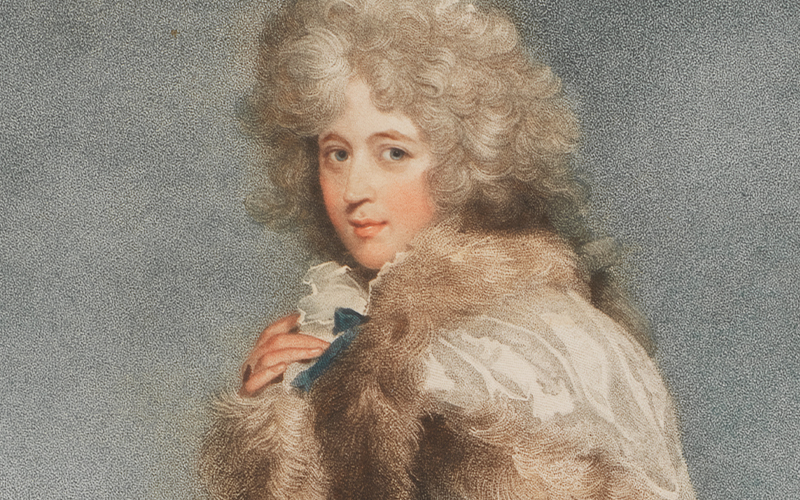Elizabeth Farren

Elizabeth Farren (c. 1759–1829) was a famous Irish actress in the 18th century. Known as Eliza on the London stage, where she achieved great success, the actress played more than one hundred roles during her artistic career, ranging from drama to comedy.
Born in the middle of the century to a family of actors, Elizabeth started out in theatre at a very young age, making her debut in London at around 18 years old. Her first performance was highly acclaimed by the audience, marking the start of a stable career spanning two decades based largely at the Drury Lane and Haymarket theatres. Her repertoire included several famous characters created by William Shakespeare – Hermione, Portia, Olivia and Juliet –, although she was best known for the comic roles which she preferred.
She met her husband at the theatre, Edward Smith-Stanley, 12th Count of Derby, and the couple had three children during their marriage, which lasted several years. It was the count who commissioned the famous painting by Thomas Lawrence which inspired the engraving by Francesco Bartolozzi, acquired by Gulbenkian in 1921. The original, life-sized portrait was exhibited in 1790 at the Royal Academy and is currently housed at the Metropolitan Museum of Art in New York.
During her life, the actress was portrayed by other artists, including sculptress Anne Seymour Damer, with whom she is said by author and diarist Hester Thrale to have been in a relationship. Eliza was also the subject of several caricatures.
Eliza’s last performance took place in 1797, much to the regret of many prominent figures of the era who held her in great esteem. The actress played Lady Teazle in the play The School for Scandal, a comedy written by Richard Brinsley Sheridan.
A Collection of Stories
On a weekly basis, we shared a story around Calouste Gulbenkian’s collection. This section was created in 2020, which is why the articles refer to the Calouste Gulbenkian Museum collection as the Founder’s Collection.
Other stories